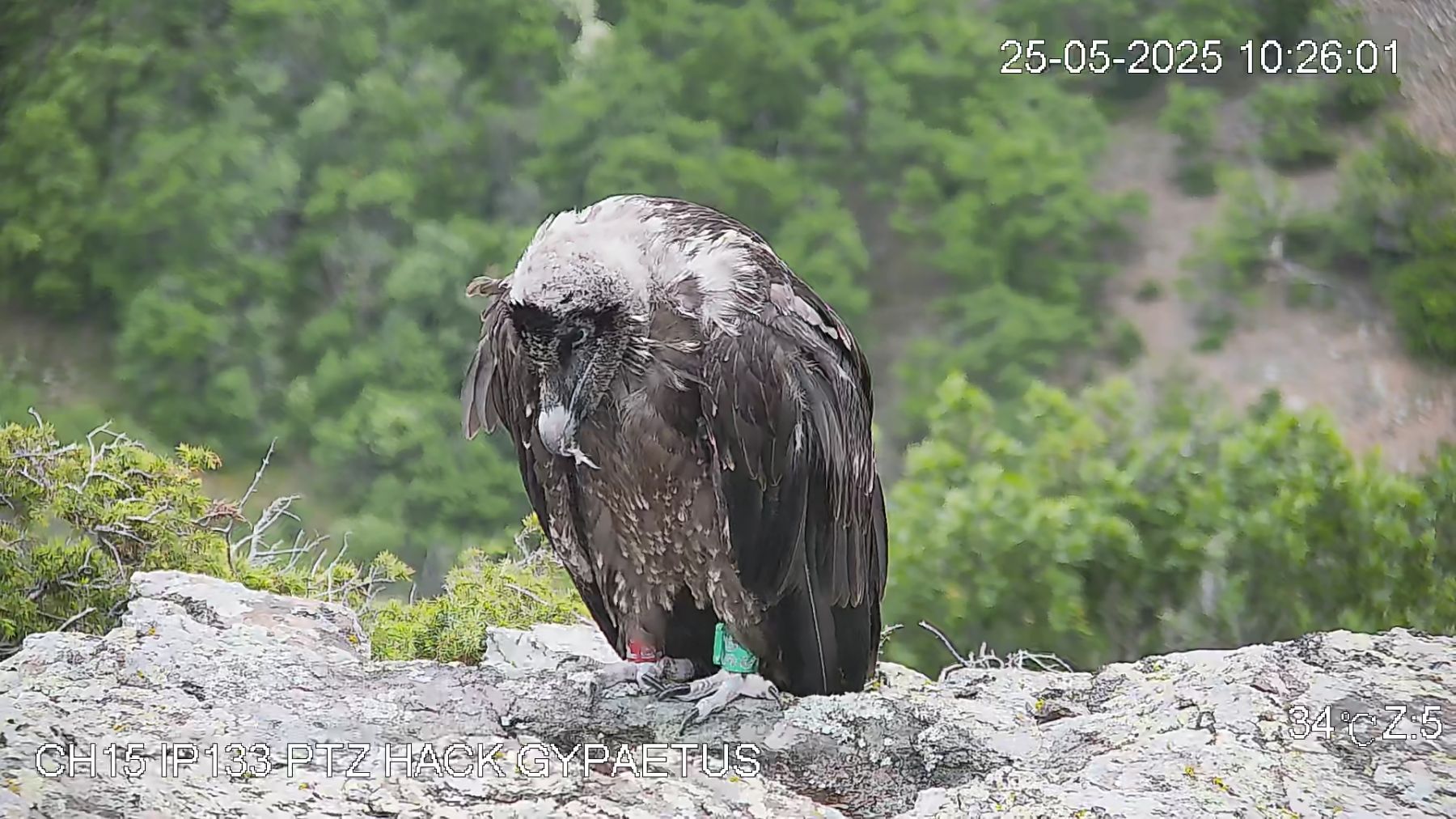Each year, several organisations in Bulgaria, Greece, Serbia, and North Macedonia collaborate on a comprehensive Griffon Vulture census. Thanks to the successful implementation of conservation projects throughout the last decade, the Griffon Vulture population is growing and expanding to new breeding locations across the Balkans. How many Griffon Vultures were counted this year?

Griffon Vulture in the Balkans: Insights from the 2023 Census
On 2 December 2023, almost 100 technicians and vulture experts from 20 organisations spent the day outdoors to count Griffon Vultures. The census occurs annually in several known and potential roosting sites in Bulgaria, Greece, Serbia and North Macedonia. With favourable weather conditions in most observation sites this year, 849 Griffon Vultures were counted, 48 more than last year (801).
“Roost counts are only a part of our common monitoring and conservation actions, but they provide essential information concerning population trends, pair bonding, cliff selection, and population age structure. If we keep the positive population trend in the future, I think we will see the Griffon Vulture reoccupying its former breeding range in the Balkans again”.
Dobromir Dobrev



Griffon Vulture Census 2023 in the Balkans
Dobromir Dobrev, from the BSPB, coordinator of the international census, states that the number of people involved in the annual initiative has been growing in the last editions, stressing, however, that there are still monitoring gaps. The count’s efficiency and the data’s robustness require a higher number of sites covered and people involved.
Expanding in the Balkan countries
Griffon Vultures are the most abundant vulture species breeding in Europe. They are globally considered “Least Concern”, according to the IUCN RedList (BirdLife International. 2021), with populations ranging from the Iberian Peninsula to the Himalayas and Africa. A long-lived species that mastered the art of flying with the minimum energy consumption, Griffon Vultures soar the skies, foraging unpredictable food sources across vast geographies in a single day. Over 85% of the Griffon Vulture (Gyps fulvus) population is concentrated in Spain (Vulture Estimates, VCF, 2022), and is increasing.
However, in some regions, such as Sardinia, Cyprus and Croatia, the subpopulations are Critically Endangered. In the Balkan countries, after a historical decline, the species has slightly increased in the last 39 years (D. Dobrev et al., 2021). Although its former range was contracted to half, several related to poison incidents, Griffon Vultures are now on a positive trajectory, with subpopulations gradually increasing in Serbia, Bulgaria and Croatia. In Bulgaria, for instance, the indigenous colony in the Rhodope Mountains is increasing, and new colonies started forming in 2010 in three breeding locations. Collaborative conservation efforts and Griffon Vulture releases in Bulgaria, at the Vrachanski Balkan Nature Park and the Kresna Gorge, highly contribute to this population growth. In Greece and North Macedonia, the species is facing a moderate decline (D. Dobrev et al., 2021).

Working beyond borders: ensuring a future for the Griffon Vulture across the Balkans
Conservation projects, implemented collaboratively by many organisations across the Balkans, have supported the return of the species in several regions. Young individuals, wild-hatched and captive-bred in other European countries, have been released in Bulgaria to repopulate suitable breeding sites. Alongside releasing and monitoring actions, additional measures have been fundamental in promoting conditions for the species’ consolidation, such as increasing food availability, improving habitat fitness and fighting illegal wildlife poisoning and other threats, that affect vulture populations. These pan-European initiatives stimulate collaboration beyond their national realms. Partners working across different geographies align efforts and share data, methods and strategies to ensure a brighter future for vulture species beyond political borders.
“I see the growth of GV in Bulgaria (and the Balkans) over the last decades as positive. United in our efforts, we stand strong and can contribute significantly more at a Balkans level to support the recovery of the vulture populations.”
Dobromir Dobrev


Organisations involved in the 2023 Griffon Vulture Census in the Balkans
Bulgaria: Bulgarian Society for the Protection of Birds/Birdlife Bulgaria, Rewilding Rhodopes, Fund for Wild Flora and Fauna, Birds of Prey Protection Society, Green Balkans, “Central Balkan” National Park Directorate, Bulgarian Environmental Partnership Foundation, Vrachanski Balkan Nature Park and “Sinite kamani” Natural Park Directorate.
Greece: Society for the Protection of Biodiversity of Thrace (SPBT), NECCA, Evros Prefecture, HOS/BirdLife Greece, Stavroupoli Forest Department, Ipeiros Protected Areas MU -NECCA, Amvrakikos MU – NECCA, Mesolonghi Lagoon MU – NECCA, Ioannina Forest Department, Thessalia Protected Areas MU – NECCA, ANIMA
Serbia: NGO Jadovnik – Oasa netaknute prirode, Prijepolje; SNR Natura, Belgrade-Valjevo
North Macedonia: Nature Conservation Association – AQUILA
Sources:
- Results of the 2023 Census
- DOBREV D, TSIAKIRIS R, SKARTSI T, et al. Long-term size and range changes of the Griffon Vulture Gyps fulvus population in the Balkans: a review. Bird Conservation International. 2022;32(2):206-221. doi:10.1017/S0959270921000198



